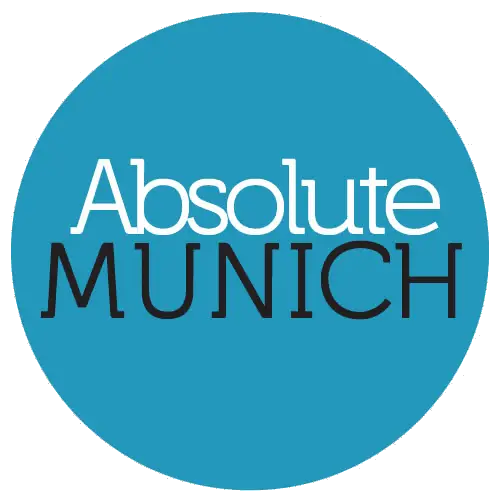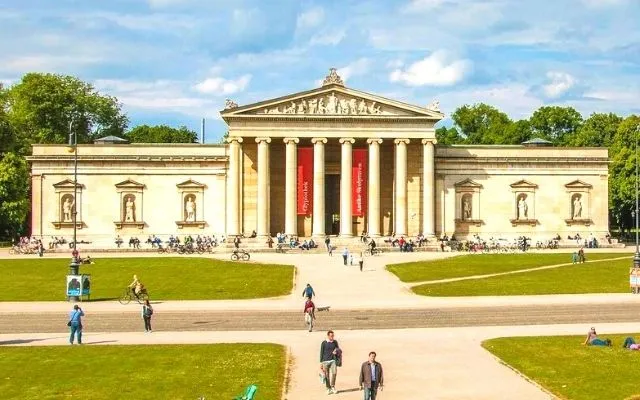The Munich Glyptothek at the Kunstareal München (Munich Museum District), should absolutely be on your sightseeing agenda if you have any sort of interest in sculpture, particularly pieces from the ancient civilisations of Rome and Greece.
Stunning marble and stone freestanding statues can be intimately examined here in the Glyptothek, all in one of the most immersive Museum experiences you could imagine.
But why is it that this particular museum could be the ideal destination for your own day out? What is the Glyptothek Meaning? And what other secrets does the Glyptothek hide?
Find out all about the Glyptothek München right here with Absolute Munich, as we take you on an exploration of this amazing Munich tourist destination.
What is the Glyptothek?
The Glyptothek is a neoclassical-style museum located within the heart of Munich, that was originally built in the 19th century under a city-wide improvement project under the direction of King Ludwig I.
The Glyptothek Museum houses the world’s premier ancient sculpture collection detailing the ancient history of the Greeks & Romans through art.
This is the oldest public museum in the city and is incredibly the ONLY museum dedicated solely to ancient sculptures on the planet.
The Glyptothek exists within Munich’s museum quarter, the Kunstareal, and features a vast collection of different ancient sculptures and relics from a number of ancient civilisations.
However, the Glyptothek Museum in Munich is best known for its extensive collection of Ancient Greek and Roman sculptures.
What Does the word Glyptothek Mean?
The Glyptothek Meaning translates from ancient Greek where the word “Glyphein” – meaning to sculpture or carve, and the word “Theke” – meaning repository, are combined to form Glyptothek.
Glypothek could be translated roughly to Sculpture Collection, Sculpture Container or Sculpture Display to name a few versions, depending on how you wish to interpret it.
Who Built the Glyptothek?
The Glyptothek was commissioned by the Bavarian King, Ludwig I as part of his “Athens on the Isar” project.
As it still serves today, it was always intended to house his collection of ancient Greek and Roman sculptures.
In line with this, the museum was designed by that man, court architect Leo von Klenze, to have a neoclassical style, which was common and highly popular at the time throughout Europe.
With an exterior entrance portico highlighting twelve Ionic columns, and a facade featuring 18 niches containing life-size original Roman and Greek sculptures, the building really does dominate the space here on Konigsplatz.
The original building, sadly pretty much destroyed in World War II, was constructed entirely of marble, however, the current remodelled version is primarily red brick covered in white plaster.
The Glyptothek was built between 1816 and 1830 and was the first constructed here in the Museum District, which is why it’s the oldest public museum in Munich.
What Can I See and Do at the Glyptothek?
As we’ve already mentioned, the Glyptothek is best known for its extensive collection of ancient Greek and Roman sculptures and relics.
However, that is not the only thing to see at this impressively large Munich museum; in fact, the Glyptothek also houses other collections from the Hellenistic, Classical, and Archaic periods.
So whilst most of the art within was created during the dominance of the Roman Empire, there are other influences in play.
We love the inner courtyard of the Glyptothek which provides for a peaceful haven from the hustle and bustle of the city.
The large windows surrounding the courtyard provide an amazing array of light for the displays within and the shaded seats are a relaxing place for a snack or coffee from the Glyptothek Cafe.
Where is the Glyptothek in Munich?
The Glyptothek is located within Munich’s Kunstareal quarter of the Maxvorstadt District, and is very close to the Munich Old Town (Altstadt).
It is neighboured by the Staatliche Antikensammlungen (the State Collections of Antiquities) and the Propylaea (PROPYLÄEN) which is an ancient city gateway modelled on the acropolis of Athens.
Very nearly in the central heart of Munich itself, the Glyptothek is easily accessible for those visiting the area.
As one of the dominant compass points of the Königsplatz complex the Glyptothek is instantly recognisable thanks to its uncanny resemblance to a Greek Temple.
How Do I Get to the Glyptothek?
Walk: The best way to get to the Glyptothek Museum, if you’re feeling energetic, is to walk from Munich’s City Centre.m The stroll will take you around 25 minutes.
Bus: There are numerous bus stops around the Glyptothek museum, one of which is just a minute’s walk or so from the museum’s entrance.
Train: The museum is well accessed by the Munich U-Bahn with the closest underground station being Königsplatz on line U2.
Glyptothek Munich Tickets and Opening Hours
Tickets: The entrance fees to the Glypthotek are very reasonable with ADULT TICKETS costing just €6 apiece. Concessions are €4 and under 18’s are actually FREE.
For a great opportunity to experience these iconic ancient sculptures at a very reasonable price why not visit on a Sunday where the entrance is just €1.
Hours: Open Tuesday to Sunday from 10am to 5pm. The Glypthotek is closed on Mondays.
Website: You can purchase Glyptothek Tickets direct from the Museum with all other relevant information on the premises to be found here on their website Antike-am-koenigsplatz.mwn.de/index.php/de/glyptothek
Nearby the Glyptothek in Königsplatz?
If you’ve been planning a visit to the Glyptothek which is centrally located on the very famous Kings Square of Königsplatz you’ll find a plethora of other exciting things to do in the area.
For example, the Hochschule fur Musik and Theater Munchen is just to the East, and Munich’s Palaeontological museum is just to the West.
Alternatively, other local and national museums just around the Glyptothek include the Munich Museum of Egyptian Art, the S Dokumentationszentrum Munchen, the Staatliche Antikensammlung, and the Lenbachhaus Museum of 19th and 20th-century art.
Just a short stroll away discover the English Gardens, Siegestor, Hofgarten, the Alte Pinakothek, and many more of Munich’s amazing sights.
Other Glyptothek Museums
There are a few other different Museums in the world with the title Glyptothek such as the NY Carlsberg Glyptotek in Copenhagen and the Gliptoteka in Zagreb.
And amazingly, not even the National Glyptotheque, in Athens houses as much influential ancient sculpture art as does the Glyphothek München.
Glyptothek Munich: A World of Ancient History
As we’ve suggested at the start of this article if you have even a passing interest in ancient If the ancient worlds of Greece and Rome then this art museum is unmissable.
Despite the Glypthotek barely getting a mention on many Munich Guides, we think this unique property is one that should be an integral part of any visit to Munich – and we highly recommend paying it a visit.
We hope you enjoyed the read, and we hope you’ll visit us again here soon at Absolute Munich where we regularly post informative articles dedicated to this wonderful city.
Cheers, and Have a great day!
Glyphothek Munich
The Glyphothek (an intentional misspelling), is referred to frequently online as spelt in this manner.

